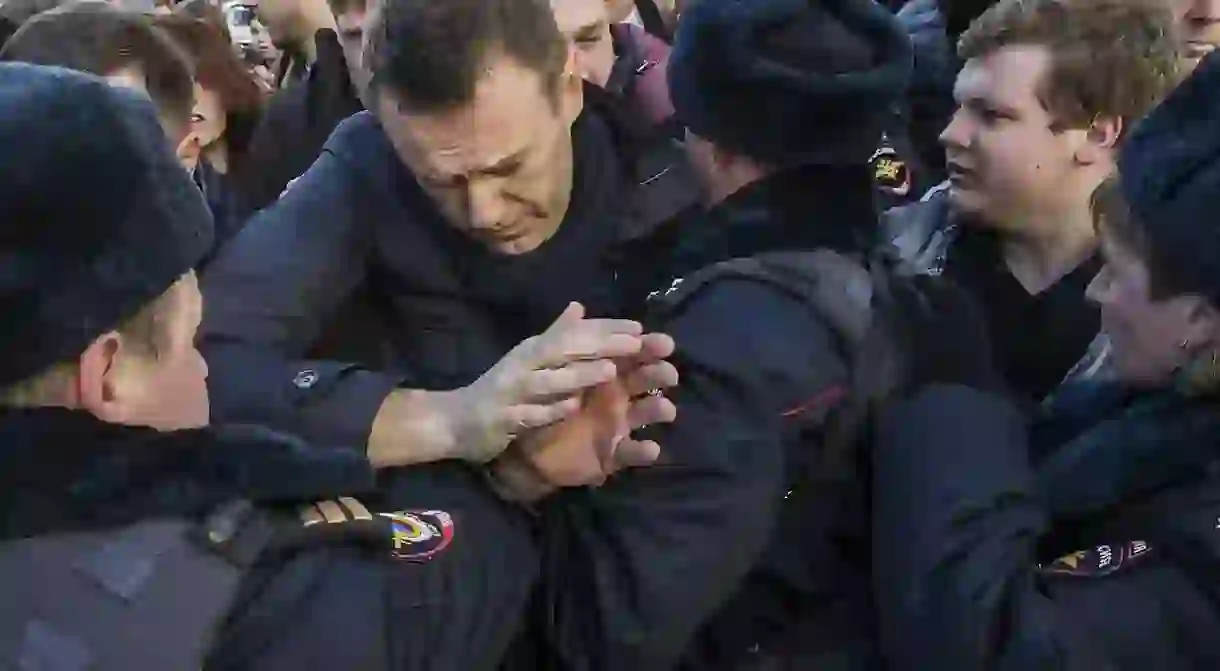Moscow's History in 20 Photographs

Moscow is a fascinating, complex city. Its long and convoluted history can be seen from every street and every building. Previous centuries added new layers to Moscow’s architecture and street layout. Many pivotal moments in Moscow’s history have been captured on film as well. Here is the history of Russia’s capital in 20 photographs.
Construction of the Cathedral of Christ the Saviour
One of the first photographs of Moscow showed the construction of the Cathedral of Christ the Saviour.

Russian tsar coronations
All of Russia’s Tsars were crowned in the Moscow Kremlin. Here is the coronation of Russia’s last Tsar, Nicolas II on May 14, 1896.

The October Revolution
The October Revolution took its toll on Moscow. Here are the victims being buried on the Red Square, November 10, 1917.

Demolition of the Cathedral of Christ the Saviour
On December 5, 1931 the Communist authorities demolished the Cathedral of Christ the Saviour to make space for the Palace of Soviets, which was never constructed.

The Moscow metro system
The newly established Soviet State couldn’t afford to build the Palace of Soviets, but they did, however, find the funds to build a metro system. The first lines were open in 1935. Here is the construction of one of the stations.

The Soviet Union against Nazi Germany
1941 marked the beginning of the Soviet Union’s war against Nazi Germany. Here are Soviet soldiers conducting military exercises in one of the parks in the centre of Moscow.

A parade for victory
The victory in the war was first celebrated in 1945 with a parade, which has been repeated every year since then.
The death of Joseph Stalin
Joseph Stalin died in 1953. His death changed Moscow and the entire Soviet Union. Here is a picture from his funeral in Moscow.

First human in space
1961 marked the first flight of a human into space. This achievement was celebrated in Red Square in Moscow.

A pool fills an empty space
In 1960, new Soviet authorities filled the empty space, where the Cathedral of Christ the Saviour had been with an open-air swimming pool.

The capital of the Soviet Union
Moscow was the capital of the Soviet Union. So many important events for the country took place there. Here is a Soviet youth union celebrating its anniversary at the Kremlin.

The Olympics
Moscow was also where the Summer Olympics of 1980 took place. These were the first Olympic Games to be held in Eastern Europe.

The collapse of the Soviet Union
In 1991, the Soviet Union started to collapse. Mikhail Gorbachev, the leader of the USSR at the time, introduced a series of reforms to decentralise the country’s government. Hard-core communists opposed them and staged an unsuccessful coup d’état.

Separatists were held at bay
The separatists were stopped by Boris Yeltsin, then the President of the Russian Soviet Republic.

Apartment bombings and the Second Chechen War
1999 was a tragic year in the history of Moscow and the whole of Russia. A series of apartment bombings, attributed to Chechen terrorism, took place in Moscow and several other cities across the country. It was the start of the Second Chechen War, which ultimately brought Putin to power.

Putin becomes President
In May 2000 Vladimir Putin became the President of the Russian Federation. This event changed both Moscow and Russia forever.

The Cathedral of Christ the Saviour is rebuilt
After the dissolution of the Soviet Union, the Russian Orthodox Church started gathering funds to rebuild the Cathedral of Christ the Saviour. The endeavour was completed in August 2000 when the new Cathedral was consecrated.

A financial powerhouse
After the system transformation, Moscow became one of the most important financial centres in Europe. Most of the city’s institutions are now located in Moscow City.

Boris Nemtsov is assassinated
In 2015 a prominent opposition politician, Boris Nemtsov, was shot and killed just a few steps away from the Kremlin. The spot of his assassination is always filled with flowers.

Protests against Putin
Recently, Moscow has been one of the most prominent stages of anti-Putin protests.














